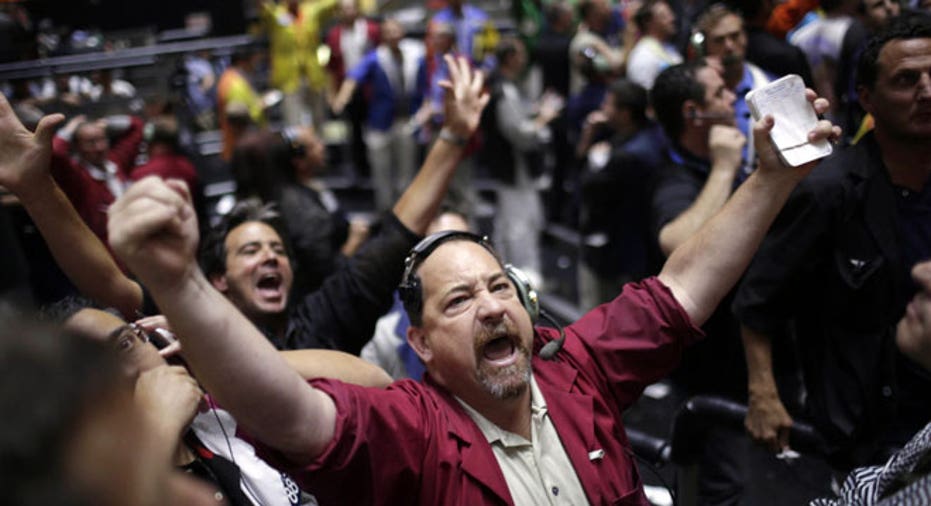Dismiss the Noise About Delaying Rate Hikes

Forget all the handwringing by investors, analysts and economists. Forget the recent spate of mixed economic data. Forget all the volatility in U.S. stock markets. And forget all the mixed signals from Federal Reserve officials themselves.
In all likelihood, the Fed will raise interest rates by a quarter percentage point (0.25%) at some point this summer or early fall and then continue to normalize U.S. monetary policy through gradual rate increases over the next several years.
“With the U.S. economy showing signs of renewed life, and the Fed opening the door to tighten policy at any time, a June interest rate hike remains a distinct possibility,” said Chris Williamson, chief economist at research firm Markit. “However, weak inflation and wage growth points to September being the most likely month in which the (policy-setting) FOMC will decide to start tightening policy.”
Weak inflation has been the main concern of those who favor keeping rates at their historic low range for the foreseeable future so as not to upset the fragile economic recovery by raising the cost of borrowing prematurely.
When rates go higher so will the cost of buying big ticket items such as homes and cars, forcing some consumers to back off those purchases. It will also make it more expensive for businesses to borrow money for expansion and investment in new capital, which could impact hiring.
That’s been the reasoning for keeping rates at their historic lows for over six years that’s held sway at the Fed among the influential inflation doves on the FOMC led by Fed Chair Janet Yellen.
Bedevilingly Low Wages
But Yellen and her colleagues have recently indicated their willingness to raise rates based on an increasingly robust U.S. labor market. At last week’s regular meeting of the FOMC, policy makers dropped the word ‘patient’ from their statement, removing one of the few remaining barriers to an imminent announcement of higher rates.
One issue that has bedeviled central bankers is that wages haven’t risen in line with the strengthening job market.
“There is increasing evidence that wages are not responding normally to a tightening labor market,” said David Kelly, chief global strategist at J.P. Morgan Funds.
Even as the pace of job creation has quickened in the past year to a monthly average of well over 200,000 new jobs and the unemployment rate has fallen to 5.5% in February down from 6.7% a year earlier, wage growth has inexplicably slowed from earlier stretches in the recovery. Average hourly earnings rose just 1.6% from February 2014 to February 2015, versus 2.5% during the same 12-month period between 2013 and 2014.
“This is puzzling,” Kelly observed. “It may be that the continued demise of the trade union movement in the private sector is undermining wage growth or that neither workers nor employers fully appreciate the tightening of the labor market yet. Whatever the reason, it now appears that the unemployment rate may be able to move some distance below 5% without triggering significant wage acceleration.”
The weak wage growth and corresponding pressure on inflation has led to some mixed signals from Fed officials, who have vowed not to raise rates until inflation rises to the Fed’s target range of 2%.
Delicate Balancing Act
Chicago Fed President Charles Evans, seemingly contradicting the message of an impending rate hike conveyed by the FOMC’s March statement, said earlier this week that the Fed should hold off on a decision until at least early 2016.
“I think economic conditions are likely to evolve in a way such that it will be appropriate to hold off on raising short-term rates until 2016,” Evans said in a speech in London.
But Evans appears to be leaning against growing momentum toward a rate hike in mid-2015 followed by a series of gradual rate hikes over the next several years as deemed necessary by relevant incoming economic data.
In keeping with the difficult balancing act the Fed has traversed ever since it began unwinding its unprecedented stimulus policies initiated in the wake of the 2008 financial crisis, Fed policy makers seem eager to return the U.S. monetary policy to normal while not rushing the process.
As Yellen said last week, “Just because we removed the word patient from our statement doesn’t mean we’re going to be impatient.”
But many analysts believe the balance will be achieved in the gradual process for raising rates once the initial increase is announced.
“Last week, the Federal Open Market Committee (FOMC) removed ‘patience’ from its policy statement. However, investors should not assume that the FOMC will quickly increase short-term interest rates,” said Brian Rehling, co-head of Global Fixed Income at Wells Fargo.
“Rather, we expect the Federal Reserve (Fed) to take an extraordinarily slow approach to normalizing interest rates over many years. We still anticipate that the first fed funds rate increase will come this summer, but we also expect long pauses between subsequent rate increases,” Rehling explained.



















